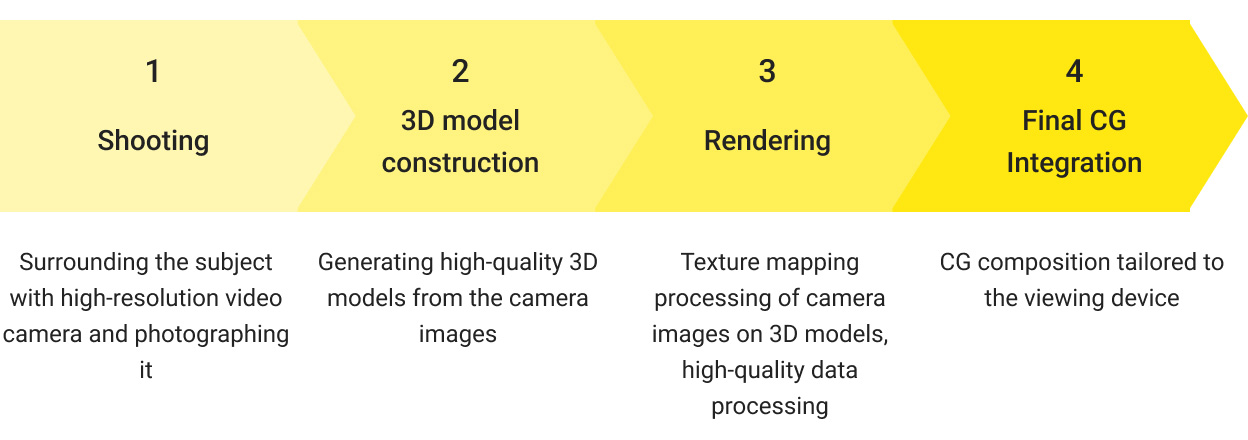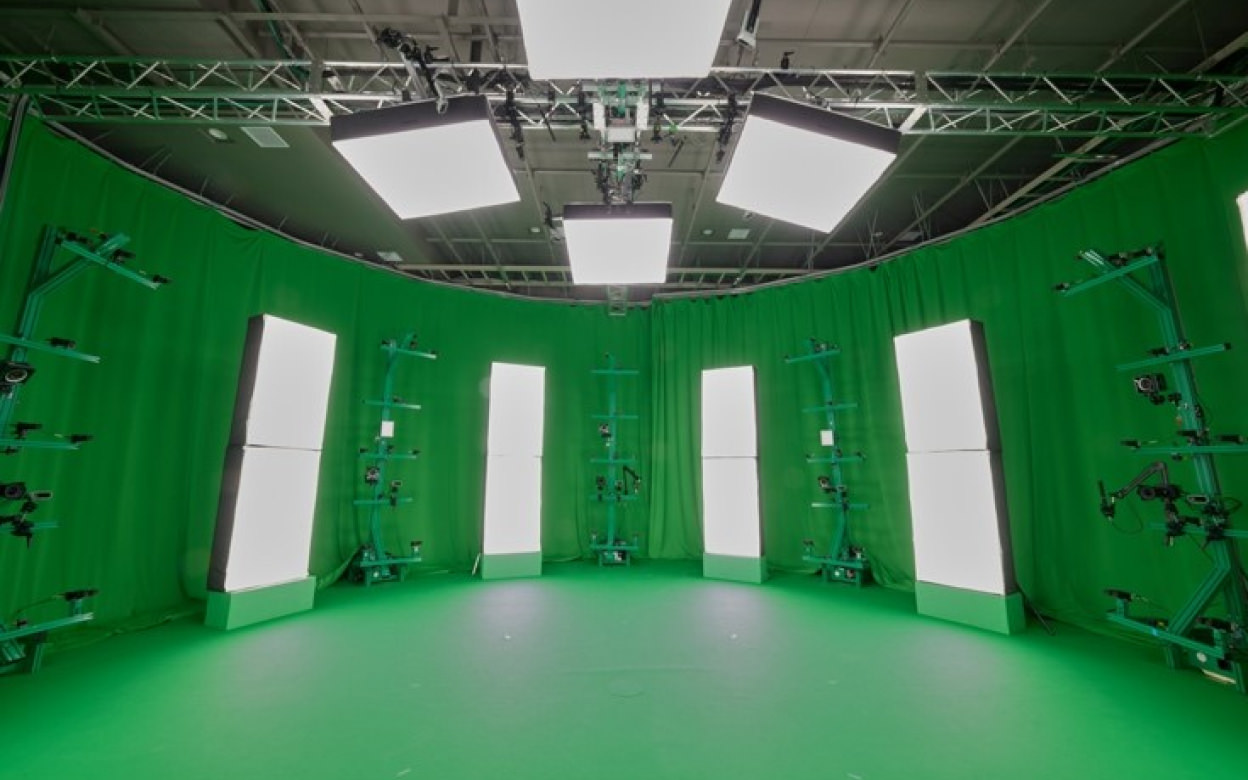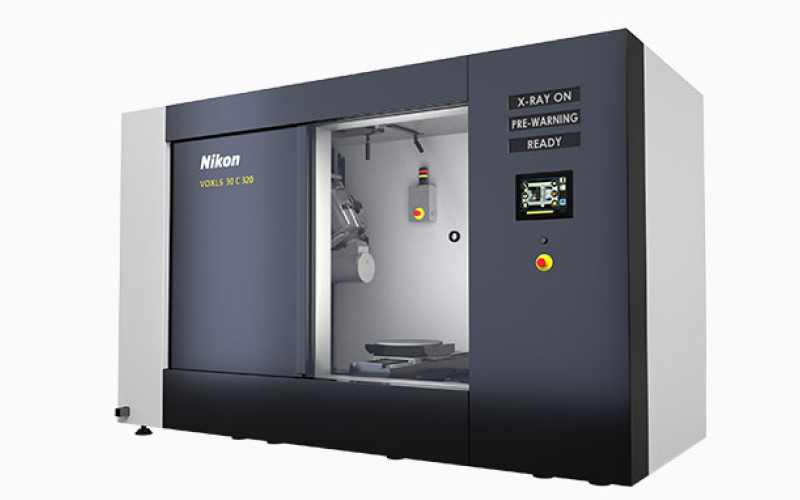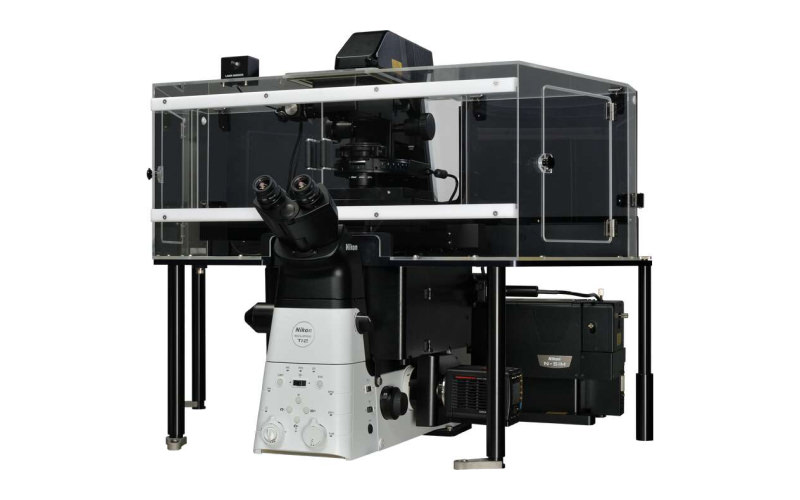Volumetric Videos
Technology Overview
Angles and sizes can be freely adjusted after the shooting using this 3D/360°data, which greatly revolutionizes the production process. In addition to VR (virtual reality), AR (augmented reality) and MR (mixed reality) which is a fusion of reality and virtuality are also supported.
With volumetric video, you can capture from an angle, or move at a speed that would not be possible with conventional cameras. Dynamic expressions that can only be captured through volumetric means can be used in the most climactic part of the movie. This technology will not only change how videos are directed and produced, it will also play a crucial role in shaping future forms of image expression.
The subject is captured from various angles using multiple cameras, and a three-dimensional model is reconstructed from the multiple two-dimensional images. This reconstruction involves identifying identical points in multiple images in three-dimensional coordinates to obtain a point cloud of the subject. The surface of the subject is created from this point cloud data, completing the three-dimensional model. Textures such as colors are applied to each mesh on the surface of the 3D model to create the information necessary for rendering. It renders a reconstructed two-dimensional image in real time that changes depending on the viewer's viewpoint and lighting.
Click to enlarge

The volumetric video system, “POLYMOTION STAGE”, at Nikon Creates Corporation consists of over 100 high-performance cameras that capture a full 360°view of the subject. Using technology from Microsoft, this raw data can be generated into extremely photorealistic “moving” 3D video data. Not only can facial expressions be reproduced with remarkable realism, but also even movements of hair and clothing can be reproduced naturally.
Technology Application Examples
Imaging Solution
Volumetric video offered by Nikon Creates Corporation generates moving 3D/360° data images with outstanding realism. The angle and zoom can be decided after shooting, allowing for much more freedom in editing.
Virtual production is a filming technology in which a three-dimensional video background is displayed on a large LED screen and can change in real-time according to the camera’s direction, lens angles, and the positions of actors and objects present. By employing this technology, filming can take place regardless of the weather or time at an actual location, and without the need to construct large film sets, thus greatly reducing costs. It can also contribute to the reduction of CO2 emissions, as energy is conserved by eliminating the need to travel to actual filming locations.

Technologies related to these examples
Related Technology
Image Synthesis & construction
By synthesizing or constructing images, it is possible to obtain more useful information than from captured images. For example, in X-ray CT, structures in an X-ray transmission image projected from one direction can overlap depending on the projection angles. By reconstructing the transmitted images from various angles into a three-dimensional image, it is possible to extract a cross-sectional image.
In addition to X-ray CT, it is possible to obtain three-dimensional images by capturing microscopic images while moving the sample along the optical axis, as with a microscope. In pathological diagnosis, it is necessary to understand the three-dimensional structure of tissue and to observe images of the desired cross-section. With shape measurement techniques such as laser radar, only point cloud data can be obtained from the measurement, and it may be necessary to reconstruct the data as an image for intuitive understanding or for use in further analyses.
Main Related Products
You can search for articles related to Nikon’s technology, research and development by tag.



